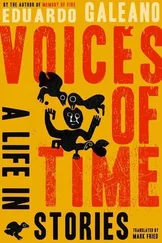Today’s slaves, though no longer called by that name, enjoy the same freedoms as their grandparents who were driven by the lash to the plantations of America.
They do not simply depart: they are pushed. No one emigrates by choice.
From Africa and from many other places, the desperate flee wars and droughts and exhausted lands and poisoned rivers and empty bellies.
Shipments of human flesh are nowadays the most successful export from the south of the world.
FIRST SLAVE REBELLION IN AMERICA

It happens at the beginning of the sixteenth century.
A couple of days after Christmas, the slaves rise up at a sugar mill in Santo Domingo owned by the son of Christopher Columbus.
Following the victory of Divine Providence and James the Apostle, the roads are lined with black men, hanged.

It happens in the middle of the sixteenth century.
The slaves who fail in their first attempt to escape are punished by mutilation: an ear cut off, or a tendon sliced through, or a foot or hand removed, and in vain the king of Spain outlaws “cutting off parts that cannot be named.”
Repeat offenders lose whatever is left and then end up on the gallows, at the stake, or on the chopping block. Their heads are exhibited on pikes in town squares.
But all over the Americas bastions of freedom proliferate, in the depths of the jungle or in mountain hideaways, surrounded by quick-sand that looks like firm ground and by false paths sowed with sharpened stakes.
The runaway slaves come from different African nations and become compatriots through the humiliations they share.

It happens throughout the seventeenth century.
The havens of escaped slaves sprout like mushrooms. In Brazil they are called quilombos , an African word that means community, although racism translates it as disorder, revelry, or whorehouse.
In the quilombo of Palmares, former slaves live free of their owners and also free of the tyranny of sugar, which allows nothing else to grow. They plant all sorts of seeds and eat everything. The diet of their former owners arrives by ship. Theirs comes from the earth. Their smithies, built in the African way, give them hoes, picks, and shovels to work the land, and knives, axes, and lances to defend it.

It happens in the first half of the eighteenth century.
The international division of labor decides that Jamaica exists to sweeten Europe’s table. The land produces sugar, sugar, and more sugar.
In Jamaica, as in Brazil, diversity of diet is a privilege of those who escape. Although fertile land is hard to find high in the mountains, the maroons figure out how to grow everything, and even raise pigs and chickens.
Hidden here, they see without being seen, they sting, and then they vanish.
In these windward Blue Mountains, Nanny has her temple and her throne. She is queen of the free. Once a machine for birthing slaves, now she wears necklaces made of the teeth of English soldiers.

It happens in the middle of the eighteenth century.
The sanctuaries of freedom in Suriname resist by staying on the move. When Dutch troops discover their villages, after much pain and anguish, they find nothing but ashes.
What things do they need most? Sewing needles, colored thread, the maroons ask of the occasional peddler, who by mistake or madness runs across them. What would become of their lives without brightly colored clothes made from bits of scrap cloth expertly arranged and sewn?
From the sails of plantation windmills, broken in pieces, they make rings, bracelets, and ornaments that lend a warrior dignity. And with what the forest offers, they invent musical instruments to give rhythm to their bodies yearning to dance.

It happens at the end of the eighteenth century.
The colonial powers hang Domingo Bioho yet again, but he still reigns.
Here in Palenque, not far from the port of Cartagena de Indias, the maroons choose the bravest among them to inherit the name passed down from king to king. Domingo Bioho is one and many.
IN SEARCH OF ESCAPED PROPERTY

It happens at the beginning of the nineteenth century.
At the dinner table, the aristocracy talks of weddings, inheritance, and nigger dogs.
The newspapers of Mississippi, Tennessee, and South Carolina advertise the services of such dogs at five dollars a day. The ads praise the virtues of the mastiffs, which hunt down escaped slaves, capture them, and return them intact to their owners.
Their noses are crucial. A good hunting dog can follow a scent many hours after the prey has passed by. Also highly prized is speed and tenacity, because to erase their scent the slaves swim rivers and streams or spread pepper in their wake, and the hound that deserves its bone never gives up, never stops scouring the ground until it picks up the trail.
But most important of all is the extensive training that teaches the dog not to make hamburger of black flesh. Only the legitimate owner has the right to punish the bad behavior of his animals.

It happens in the middle of the nineteenth century.
She escapes. Harriet Tubman carries with her as souvenirs the scars on her back and a crack in her skull.
She leaves her husband behind. He tells her:
“You’re crazy. You can get away, but you won’t live to tell the tale.”
She escapes, tells the tale, returns to Maryland, and rescues her parents, Ashantis captured in Africa. She returns again and rescues her brothers. Nineteen trips she makes from the plantations of the South to the lands of the North, traveling at night, night after night, freeing more than three hundred blacks over ten years.
None of her fugitives is captured. People say Harriet cures exhaustion and regret with a gunshot. And people say she says with pride:
“I have never lost a single passenger.”
She has the highest priced head of her generation. Forty thousand dollars cold cash is the reward they offer.
No one collects it.
Her theatrical disguises make her unrecognizable, and she throws the bounty hunters off with false trails and routes never imagined.

No lawyer will defend them. Neither can they defend themselves, for the law does not believe in the oaths of Negroes.
The judge finds them guilty in the blink of an eye.
The number of fires in New York City in the year 1741 demands an iron hand against slaves ruined by too much freedom. If those found guilty are indeed the ones who set the fires, the punishment will be just. If they are not, the punishment will be a warning.
Thirteen black men will be chained to stakes and burned alive, seventeen blacks will be hanged and will swing from the gallows until they rot, and four whites, poor but white, will march to their deaths, because someone must have been the brains behind this infernal conspiracy, and brains are white.
Читать дальше





















